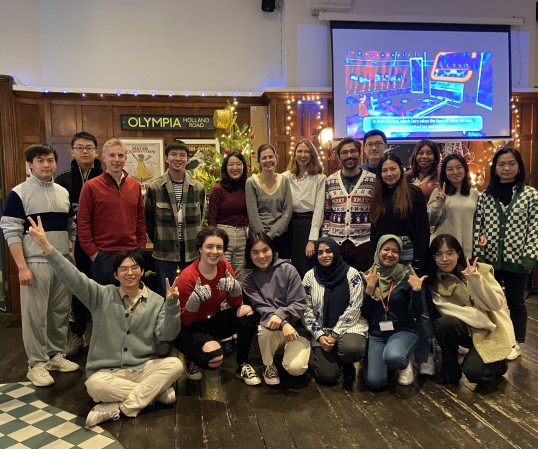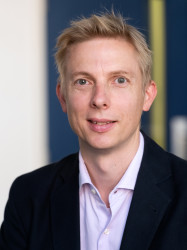Overview
The group's research interests are highly multidisciplinary but revolve around the development of materials for regenerative medicine and therapeutic applications: scaffolds for tissue engineering, therapeutic nanoparticles and understanding their cellular response. This involves materials synthesis (inorganic and organic), development of new processing techniques and advanced materials characterization.
Scaffolds

Development of materials that fulfil the design criteria for scaffold for bone and cartilage tissue engineering applications and chronic wound healing. This involves materials synthesis, processing, advanced materials characterisation and the investigation of cell responses to the materials. Materials are bioactive glasses (melt and sol-gel derived) and inorganic/ organic hybrids. Synthesis work includes collaborations with Dr Theoni Georgiou (Imperial) and Dr Remzi Becer (QMUL). Processing techniques include foaming, freeze casting, electrospinning and 3D printing.
For bone regeneration a highly porous material is required that mimics the structure and properties of bone and can stimulate new bone and blood vessel growth, i.e. be "bioactive" and biodegradable. For cartilage, softer materials with oriented structures are needed. In wound healing, flexible materials are needed that can stimulate blood vessel growth and support skin cells.
Therapeutic nanoparticles

The group is also developing nanoparticles for therapeutic applications (cancer therapy and inorganic drug delivery) . Mechanisms of action and fate of the particles are investigated in collaboration with Prof Alexandra Porter.
Advanced Characterisation

Novel techniques for quantification of 3D pore networks and tissue ingrowth into the pores are being developed with Dr Gowsihan Poologasundarampillai (Birmingham) and Professor Peter Lee's (UCL) teams (Harwell Research Campus), by applying computer algorithms to 3D X-ray microtomography images. Collaborations with surgeons at the Musculoskeletal Lab and St Mary's Hospital (Imperial College Medical School) and industrial partners assist with material design criteria and technology transfer.
An important collaboration with the Physics Departments at Warwick (JV Hanna) and Kent (RJ Newport) Universities has enabled the use and further development of advanced probe techniques for sub-nano characterisation using techniques such as MAS-NMR and neutron diffraction.
Other key collaborations

Other key collaborations are with Professor Molly Stevens, Prof Sara Rankin (Imperial) and Dr Gavin Jell (UCL) (cellular response); Prof Theoni Georgiou (Polymer Chemistry); Profs Jonathan Jeffers, Ulrich Hansen and Dr Marc Masen (Biomechanics and Tribology); Professor Anthony Bull (Blast injuries); Professors Akiko Obata & Toshihiro Kasuga (Nagoya Institute of Technology, Japan - vaterite based hybrids); Gordon Blunn (Portsmouth) and Christopher Mitchell (Ulster - in vivo studies); Laura Cipolla and Laura Russo (University of Milano-Bicocca); Professor Juan Pou (Vigo - Laser Spinning).
Current Research Group


Collaborators
Professor Molly Stevens, Department of Materials, Imperial College London, Cell response to porous bioactive scaffolds
Dr John V Hanna and Professor Mark Smith, University of Warwick, Solid state NMR
Professor Toshihiro Kasuga, Nagoya Insitute of Technology, Japan, Hybrids materials
Research Staff
Heyraud,A
Iqbal,H
Research Student Supervision
Ahmad,NE, Durability of nuclear waste glasses
Bergh,WVD, Calcium containing silica-gelatin hybrids for bone regeneration
Chung,J, TMSPMA based hybrids for tissue regeneration
Connell,L, Hybrids made with bespoke synthetic and natural polymers
Da Costa Machado,G, Biomimetic materials for bone repair
Greasley,S, Hybrids and nanoparticles for regenerative medicine
Kim,TB, 3D imaging of scaffold/ tissue interactions
Latham,DV, Bio-hybrids made with bespoke synthetic polymers
Macon,A, Bioactive hybrids containing synthetic polymers
Nelson,M, Hybrid scaffolds for cartilage regeneration
Nommeots-Nomm,A, Porous melt-derived bioactive glass scaffolds
Solanki,A, Bioactive glass scaffolds for wound healing
Tallia,F, Bioinspired nanocomposites for bone repair
Tang,HM, Porous melt-derived bioactive glass artificial bone grafts
Ting,HK, Phosphate containing hybrids for bone regeneration
Wang,D, Improving bioactivity of hybrids using Tof-Sims/ LEIS

